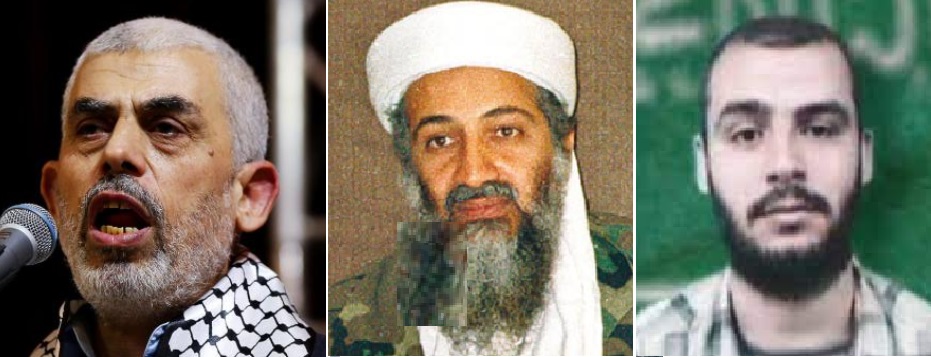
Amid tense negotiations for a hostage deal and ceasefire in Gaza, Hamas has raised a new and symbolic demand: the return of the bodies of Yahya Sinwar and Mohammed Sinwar, the two brothers declared as the primary architects of the October 7, 2023, massacre, in exchange for the release of 48 hostages still held in the Strip. The demand, reported yesterday by the Wall Street Journal (WSJ) citing sources in mediating countries, reignites painful questions about the dignity of the dead, national security, and ethical implications—especially in light of historical practices worldwide in handling the bodies of perpetrators of genocide and severe terrorism.
Background: The Sinwar Brothers and the Massacre that Changed the Middle East:
Yahya Sinwar, Hamas’s leader in Gaza and the mastermind behind the October 7 massacre that claimed 1,200 Israeli lives, was killed in October 2024 in a chance encounter with IDF forces in Rafah. His body was identified at the Abu Kabir Forensic Institute using DNA and dental records and is being held in a secret location under IDF supervision.
His younger brother, Mohammed Sinwar—a senior commander in Hamas’s military wing and involved in the 2006 kidnapping of Gilad Shalit—was killed in May 2025 in an IDF strike on a tunnel in Khan Younis, alongside other senior figures. His body was buried in a secret location under Hamas control, without an official autopsy.Hamas’s current demand, part of U.S. President Donald Trump’s ceasefire plan, includes the release of “senior” terrorist prisoners like Marwan Barghouti alongside the bodies.
“These bodies are not just flesh and bone—they are a symbol of resistance,” a Hamas spokesperson told Al Jazeera, linking the demand to the release of “the world’s prisoners.” In Israel, the demand is seen as unprecedented: “This is an attempt to turn murderers into martyrs, which we will not allow,” a senior official in the Prime Minister’s Office stated.
Hamas’s Demand: Political Bargaining or Religious Duty?
According to reports, Hamas views the return of the bodies as an opportunity to claim a moral victory. “Our brothers fell as heroes on the battlefield, not as cowards,” Hamas declared after Yahya’s death, emphasizing that “the flag will not fall.
” The demand blends religious elements—Islam mandates swift burial and respect for the dead—with political strategy: using the bodies as a bargaining chip, as seen in past deals like the Gilad Shalit exchange. However, Israeli officials argue that returning the bodies could turn their graves into pilgrimage sites, fueling further terrorism.
Meanwhile, hostage families are torn between hope and anxiety.
“Every passing minute is a nightmare, and if this demand delays their release, it’s unbearable,” said Ronit Zuckerman, mother of a hostage. Prime Minister Benjamin Netanyahu vowed that “the account with Hamas is not closed,” stressing that Israel has rejected similar demands in the past.
Implications in the Context of Historical Treatment of Genocide Perpetrators: Between Symbolic Erasure and Bargaining
The case of the Sinwar brothers is not isolated; it reflects a longstanding global tension between human dignity and security, as evidenced by historical cases of handling the bodies of genocide perpetrators. The Geneva Conventions mandate respect for the dead, but in practice, security considerations often take precedence—especially when bodies could become ideological symbols.
- Adolf Hitler (1945): After his suicide, the Soviets burned his remains and scattered the ashes in the Biederitz River in 1970 to prevent a Nazi shrine. This was a clear act of “symbolic erasure” to avoid inspiration.
- Adolf Eichmann (1962): After his execution in Israel, his body was cremated, and the ashes were scattered in the Mediterranean to eliminate any trace of the Holocaust’s “abomination.”
- Osama bin Laden (2011): The U.S. disposed of his body in the Arabian Sea after minimal Islamic rites, preventing a shrine for al-Qaeda.
- Abu Bakr al-Baghdadi (2019): The ISIS leader’s body was similarly disposed of at sea, following his elimination, to avoid inspiring followers.
In contrast, cases like Saddam Hussein (2006), who was buried in a family grave under strict supervision, are exceptions. In Israel, the policy is unique: the bodies of terrorists (approximately 52 as of 2025) are held as “bargaining chips” for the return of hostages, as approved by Israel’s Supreme Court. Hamas’s demand seeks to turn this tool against Israel but faces fierce opposition: “This is an attempt to whitewash the blood of October 7 victims,” said Dr. Chen Kugel, who identified Yahya Sinwar’s body.
Will the Demand Reshape Negotiations? Experts warn that the demand could prolong the hostages’ suffering.
“Hamas is using the bodies as a psychological weapon, akin to the Nazis or ISIS,” wrote an analyst at the Institute for National Security Studies. Meanwhile, organizations like Amnesty International call for respecting the dignity of the dead but acknowledge that “security overrides everything in such conflicts.
”As the anniversary of the massacre looms tomorrow, this demand reopens an old wound: Can the bodies of murderers be returned without reviving their spirit? Israel, as it has done before, is likely to refuse—but the negotiations remain open. “Time is against everyone,” concluded a Qatari official involved in the talks. Only the future will tell if this demand becomes a deal or another symbol of stalemate.
The article is based on recent reports from the Wall Street Journal, Times of Israel, and Ynet, as well as historical analysis from sources like BBC and Yad Vashem.